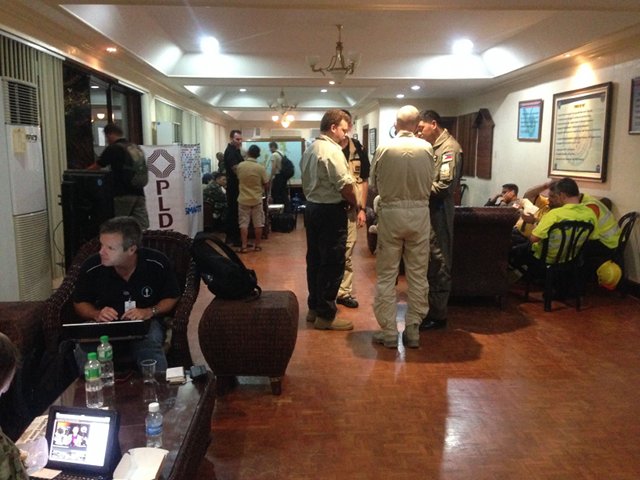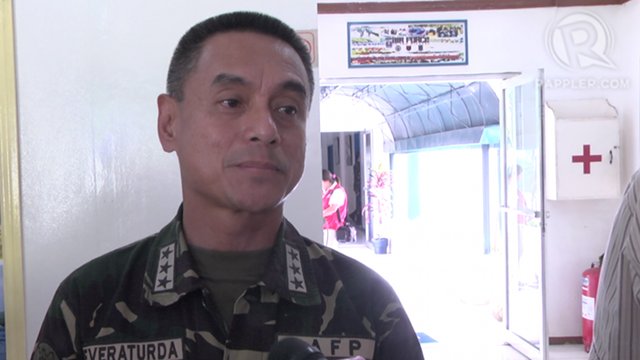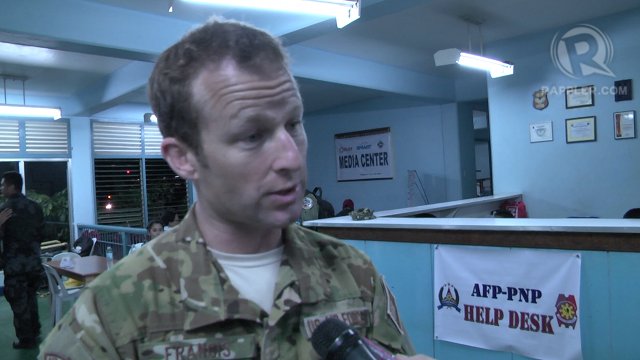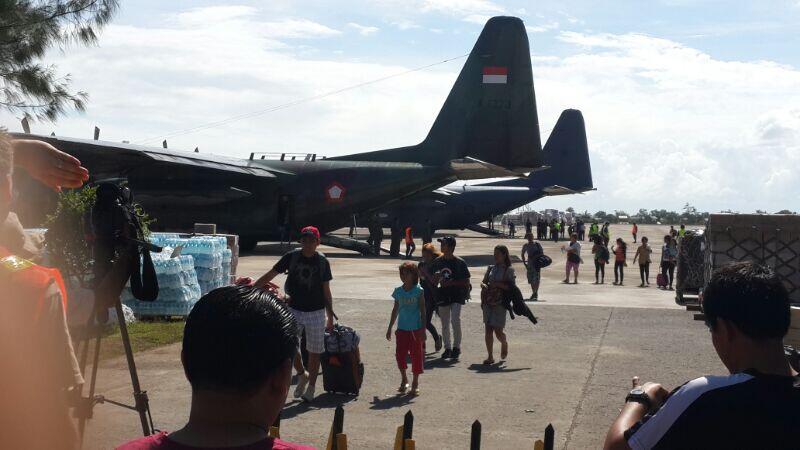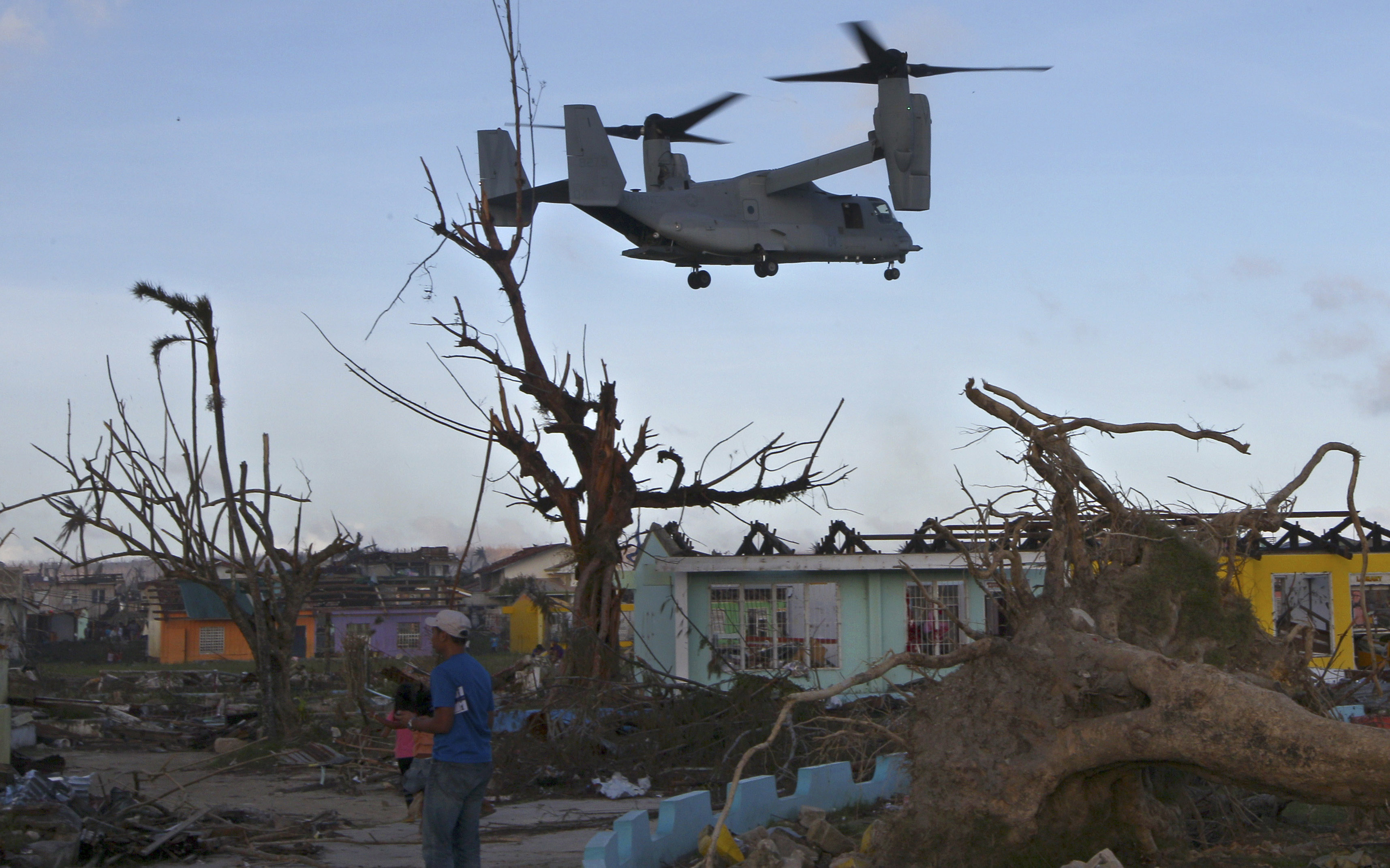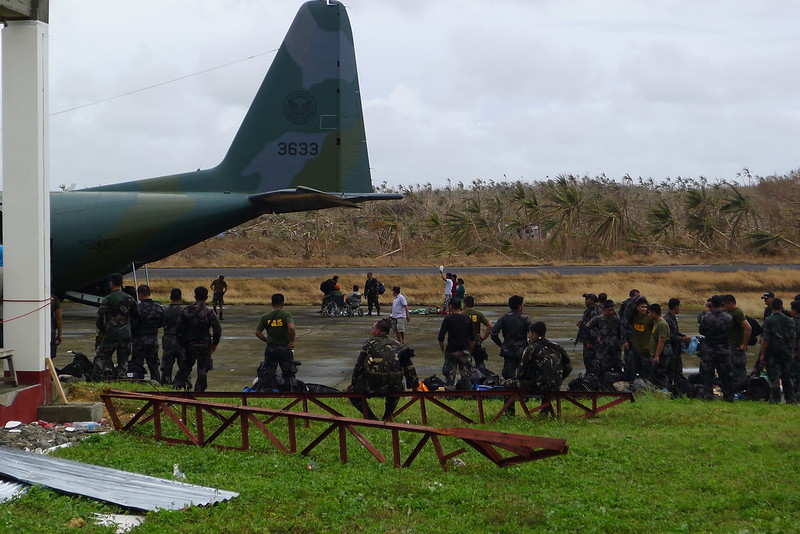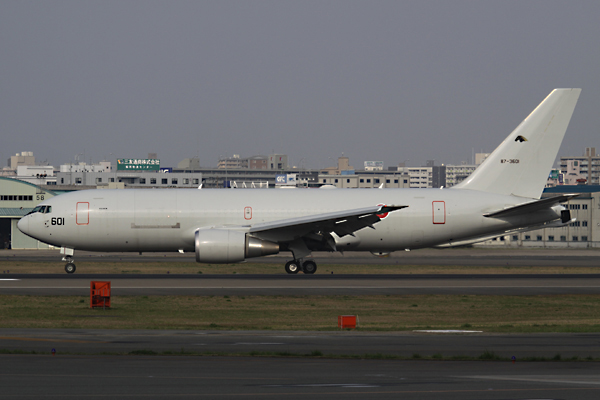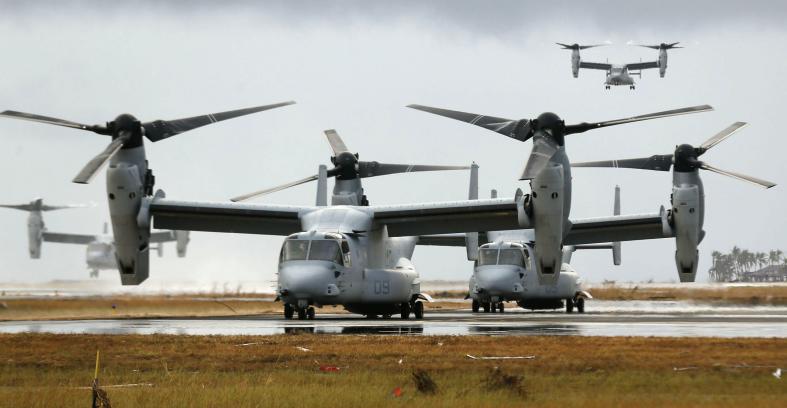Persuading Allies to buy Their Own
24 November 2013
By ERIC TALMADGE and SETH ROBSON
Associated Press, Star and Stripes
The U.S. Marines’ newest and in some quarters most controversial transport airplane is showing the world what it’s got — for the sake of the victims of Typhoon “Yolanda” (international name: Haiyan), and perhaps its own future.
The MV-22 Osprey, which can tilt its rotors to fly like either a helicopter or a fixed-wing aircraft, is delivering tons of aid every day to people affected by the Nov. 8 storm. The U.S. military’s humanitarian effort presents a golden opportunity: The Marines want to show how safe and versatile the Osprey is, countering critics and helping to persuade allies to buy their own.
Anger over the decision to base the aircraft on the Japanese island of Okinawa, the only place in Asia where they are permanently deployed, has made the aircraft the poster boy of anti-military sentiment there. Opponents cite noise problems and high-profile crashes in the early days of the Osprey, though its safety record since then has been better than any other helicopter-type aircraft.
With its unique design, the Osprey can fly faster and farther and carry heavier loads than the helicopters it replaced.
“Anything that’s different generates criticism. And the Osprey is different,” says Capt. Travis Keeney, who has been flying the aircraft for six years. “There’s nothing like it in military history.”
He’s taken the Osprey to Iraq, Libya and Africa, but this is the biggest humanitarian mission he’s ever been involved in. He wants his aircraft to shine, and his squadron has a lot to prove.
Keeney’s first orders Tuesday appear to have little to do with humanitarian aid. His crew is told to sit tight and prepare to transport an Israeli general.
The Osprey has proven itself in battle in Iraq and Afghanistan, and that has gotten the attention of militaries around the world — including Israel’s.
“Everybody wants to see it,” Keeney says.
But that plan is scrapped, and by 10:30 a.m., Keeney’s Osprey and five others delivering aid are on their way to a busy drop zone in Borongan on the island of Samar. They will make as many runs as they can to pick up and offload supplies.
Keeney’s day usually goes about 12 hours — with nine or 10 in the pilot’s seat and six of actual flying. Shifts earlier in the crisis were longer, but even now he doesn’t have time for breaks. He takes whatever food he needs with him on the Osprey. If he needs to relieve himself, he has an empty bottle.
As the plane, now bursting with boxes of supplies from the U.S. Agency for International Development, gets close to the disaster zone, the crew chief lowers the back ramp, turning the rear of the Osprey into a huge window onto the bright blue Gulf of Leyte and the devastated Samar coastline below. The crew assesses the damage along the way to see what other places they should try to reach.
Borongan, the first stop, was not so badly impacted, and the drop is organized and efficient. Local men run to the Osprey, grab the boxes and race back to the loading area. In 15 minutes, the Osprey is airborne again.
Lifting off in an Osprey feels much like it does in any helicopter, but when it switches to airplane mode it’s much faster, zooming forward like a jet.
Guiuan, the next stop, has suffered far more damage and is much more hectic. It is so congested with aircraft that Keeney decides to bag it and fly to the USS George Washington, a short hop offshore. Within a half hour, the Osprey is refueled and back in Guiuan, with supplies to drop off from the carrier.
From there, the Osprey flies to Tacloban, which was almost completely flattened by the storm and has become a hub for aid efforts.
The area around the runway has become a tent city populated by nongovernmental organizations, military planners, emergency workers and local people desperate for supplies or a flight out.
Helicopters buzz the skies like mosquitoes. Most of the military aircraft here are American, but an Austrian C-130 taxis by as Keeney’s Osprey begins to load up.
Keeney takes off as soon as the plane gets more fuel and more supplies, including 10 bags of rice. En route to Guiuan, over the eastern Samar town of Salcedo, Keeney sees a distress signal spelled out on the ground.
He decides to make a quick drop.
As soon as the ramp goes down in LZ Salcedo, dozens of men, women and children rush the plane, ignoring instructions from the crew. They climb on board and fight each other to get the bags of rice.
This is what crew chief Michael Anthony Marin was told wouldn’t happen — that the chaotic early days of the aid effort were over. This is his first flight since getting to the Philippines, and his first real-world operation as a Marine.
“I was scared as hell,” the 27-year-old says later. “You could see the desperation in their eyes. I was worried about the safety of my crewmembers.”
Fearing the situation could get out of control, the crew cranks up the Osprey’s propellers, creating a deafening roar and a strong rotor wash on the ground. With no more rice to grab and the wind on the ground making it hard even to stand upright, the crowd disperses and the Osprey flies off.
The next stop is only about a mile away. This time, townspeople run to the plane, form a chain gang and quickly offload the USAID boxes — no panic, no fighting.
“I guess a situation like this just brings out the best and the worst in people,” Marin says. “You want to keep them going, but there is only so much you can do.”
It’s just after 7 p.m. Keeney is tired after the day’s run, and disappointed about the morning delay.
“We got out, conservatively, about 3,600 pounds of supplies today,” he says. “We had six Ospreys flying, so altogether that’s about 25,000 pounds. But we could have done a lot more if we had had that extra time.”
About two weeks after the typhoon, Marines say things are improving.
Maj. Brian Psolka, the operations officer for the Keeney’s Osprey squadron, VMF-265 of the 3rd Marine Expeditionary Battalion, says that roads previously inaccessible to ground transport have opened up, so the Ospreys are under less pressure to make drops outside of the more established landing zones, like Guiuan and Tacloban. He said mob scenes like the one at LZ Salcedo are now rare because logistics and civil order have improved significantly.
Rebuilding will take a long time, but a degree of stability is beginning to return to the millions affected by the monster storm, which killed at least 4,011 people, left more than 1,600 missing and displaced hundreds of thousands more who went days without basic necessities.
“We hope they get back on their feet as soon as possible,” Psolka says, adding that the Ospreys will leave as soon as the Philippines government says they are no longer necessary. He also says he is convinced that the Ospreys have proven their mettle, delivering more supplies and moving more people to otherwise inaccessible places than would have been possible with regular helicopters or fixed-wing aircraft.
Marin, the crew chief, is ready to stay as long as needed despite his “crazy” first day.
“I’ve been in the Marines for three years,” he said as he smoked a post-mission cigarette outside the hangar. “It’s always training, training, training. Sometimes you wonder why you do it. Then something like this happens and it puts everything into perspective. We prove ourselves by doing something like this.”
“We have gone to some rural areas looking for open fields to get into,” said Osprey crew chief Sgt. William Kaker, 28, of Murfreesboro, Tenn.
“We don’t see anybody at first, but by the time we land, people come out by the hundreds out of nowhere.” says Kaker.
Marines from Medium Tiltrotor Squadron 262 — “the Flying Tigers” — are working at full capacity to deliver aid, ferry passengers and survey damage with eight Ospreys. Four others are here from its sister unit, Medium Tiltrotor Squadron 265.
The Ospreys, which use wings to cruise and tiltrotors to land and take off vertically, were able to fly 800 miles from Okinawa to the Philippines and start delivering relief supplies, according to squadron operations officer Maj. Andy Gonzalez, 35, of Long Beach, Calif.
The tiltrotors’ range — twice that of conventional helicopters — gives them the ability to fly out of Clark Air Base, hundreds of miles from the disaster zone, and land at numerous locations.
“The benefit of the Osprey is that, while the focus is in the immediate vicinity of Tacloban (the city that bore the brunt of the typhoon), our aircraft can range wider,” Gonzalez said. “We can touch areas that wouldn’t be reached by helicopters.”
Helicopters involved in the relief effort are dropping supplies within a 10- to 20-mile radius of Tacloban, but the Ospreys can range much further, he said.
The Ospreys’ unique features have created some confusion at the airport in Tacloban. Even though the V-22 can drop out of the sky like a helicopter, its only allowed to land on the flightline, while conventional helos are allow to land on the grass next to the runway.
Crew members say they want the Osprey to be treated like a fixed-wing aircraft when commuting and like a helicopter once it arrives at its destination.
During the 2005 tsunami relief effort in Indonesia, which Gonzalez participated in, the Marines didn’t have Ospreys and had to use ships as bases to access the disaster zone, which, fortunately, was limited to the coast, he said.
“The other day they sent us to landing zones that were 40 miles from Tacloban, and we can go further than that,” Gonzalez said.
Each morning, the aircraft load up on as much as 5,000 pounds of relief supplies at Clark, in the shadow of Mount Pinatubo, and head for the disaster zone 350 miles away.
Soaring to 10,000 feet and flying at 280 knots, the trip takes about 90 minutes. In the disaster zone most of the flying is below 3,000 feet and at speeds slower than 230 knots to save fuel.
The aircraft are moving supplies and personnel from hubs such as Tacloban and Guiuan – where large aircraft are delivering aid in bulk - to remote sites that might not be accessible by vehicles, Gonzalez said.
Sometimes crews fly to particular villages. Other times they cruise over specific areas, looking for landing zones and people in need, he said.
All the Ospreys need to drop supplies is an open area that’s big enough for the aircraft, although crews watch out for hazards such as boggy ground, overhead wires and towers, he said.
“Some of the sites are right next to the water so they are still damp from flooding,” he said. “It is probably not a good idea to put a 50,000-pound aircraft on muddy ground.”
Osprey pilot Capt. Jason Snook, 31, of Cumming, Ga., said he’s been flying daily 12-hour missions delivering supplies to multiple landing zones.
In one devastated village, Snook and his crew evacuated an American and his family who they found in a crowd of survivors, he said.
On Monday, pilots Maj. David Sherman, 39, of Hillsdale, Mich., and Capt. Adrian Evangelista, 30, of the Marianas Islands, lifted off from Clark in an Osprey full of relief supplies.
Less than two hours’ later they were hovering over the Leyte Gulf above a town called Marabut that looked like it had been hit by a nuclear bomb. Virtually every coconut tree on nearby hills had been knocked over, and what used to be a small fishing village looked like a giant pile of toothpicks.
The Osprey swooped in to an open space on the waterfront, and hundreds of Filipinos emerged from the devastated landscape to cart away boxes of food.
When the Osprey passed over another devastated island, the crew searched in vain for a landing zone. Most of the buildings were piles of rubble, and the storm had thrown several large fishing boats into the coconut groves. No survivors emerged.
“Man, that island got hit hard,” Evangelista said as the aircraft departed.
It didn’t take long to find another place to drop aid. A grassy field near Culasi village was just large enough to land.
Village chairman Allan Naputo and dozens of other survivors were overjoyed when the Marines off-loaded a stack of boxes from the U.S. Agency for International Development.
Naputo said all of Culasi’s 600 residents survived the typhoon but that they welcomed the help. He handed Evangelista a scrawled wish list: “Food, a chainsaw, gasoline and a generator.”
Villages like Culasi are targets of opportunity for the Ospreys.
“We are going out and asking people what they want,” Sherman said “Some already have water and just want food and medicine. We are often the first ones there, so we have to report back what people need.”
The Osprey landed several times at Guiuan, an airfield where C-130 cargo planes have been dropping large volumes of food and water.
A team of 10 U.S. Special Operations combat controllers were there waiting for a ride to an area where they planned to establish an airstrip so that the C-130s could land more supplies. It took two trips to haul the soldiers and thousands of pounds of gear, including an all-terrain vehicle.
The Osprey also set down on the deck of the USS George Washington aircraft carrier off Samar. Sailors loaded food and water on board while the aircraft refueled.
There were other stops — at Tacloban, to drop supplies, and the carrier again, for more fuel - before a final visit to Guiuan, where about 25 typhoon victims — including several children and mothers clutching babies — waited for a ride to Manila.
Darkness fell, and the pilots donned night-vision goggles for the final leg back to Clark.
“We probably flew 1,000 miles today,” Sherman said, knowing he’d be doing it all over again the next day.



